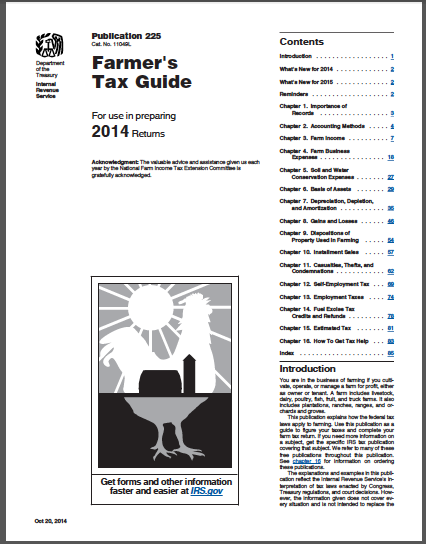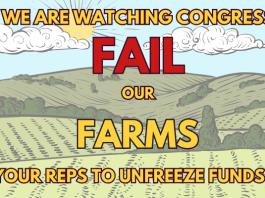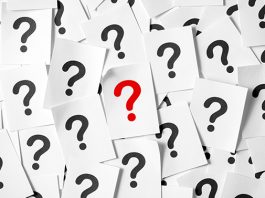
Farmers and others interested in maintaining the working landscape need to plan carefully in order for farms to be successfully transferred. This is true if the transfer is within a family from one generation to the next or between unrelated, retiring and beginning farmers. One of the most important aspects of a successful transfer is dealing with accumulated assets.
Retiring farmers that I have worked with know that they will owe capital gains tax if they sell assets. They fear that these taxes will “take it all.” To make matters worse, retiring farmers often don’t have a clear understanding of tax laws concerning gifts and inheritance. In this series of articles I will clarify the three common ways for an owner to transfer assets – sale, gift, and inheritance – and touch on the role that farm assets play in farmers’ retirement planning.
Ways to Transfer Farm Assets
 Most farmers build up their assets over a lifetime. By the time they begin thinning about estate planning, farm transfer or retirement, there are many, many assets to think about, like inventories, livestock, machinery and equipment, buildings, and land. Transferring these assets takes a considerable amount of planning. Farmers usually have a clear understanding of how to accumulate assets, but have a shaky understanding of how to transfer assets.
Most farmers build up their assets over a lifetime. By the time they begin thinning about estate planning, farm transfer or retirement, there are many, many assets to think about, like inventories, livestock, machinery and equipment, buildings, and land. Transferring these assets takes a considerable amount of planning. Farmers usually have a clear understanding of how to accumulate assets, but have a shaky understanding of how to transfer assets.
There are three common ways to transfer an asset. You can sell it. You can give it away. Our you can keep it until you die and someone will inherit the asset. Simple isn’t it? But consider the tax basis and it gets a little more complex. This isn’t anything that people usually think about, but basis is a very important consideration in how to transfer an asset.
The tax basis is “the amount of money left” in a capital asset after depreciation. Tax laws and tax rules are very specific about how to calculate the basis. Whenever you buy a capital asset, your basis is what you paid for it. Then you depreciate that asset a little bit each year. Depreciation follows tax rules; it is a non-cash expense that farmers declare on their 1040F farm tax return. Adjusted tax basis is what you paid for the asset minus all of the depreciation that you have taken on that asset. Eventually you will finish depreciating the asset, and your adjusted tax basis will be zero.
Depreciation Examples
Most assets depreciate – machinery, equipment, purchased livestock, and building. The IRS does not allow anyone to depreciate land or a private home. Your initial basis in an asset stays with you until you transfer the asset. Raised livestock have a basis of zero. You claimed the expenses of raising them on your annual 1040 F tax return (you “expensed” them). So when you sell livestock that you raised, all of the money you receive is gain.
Sometimes you may add to the basis of an asset such as a a motor job on a tractor, or a new roof on a barn. In those cases, you will likely depreciate the improvement over a number of years. Improvements to land (like clearing to make more pasture or cropland) or your private home (like a new kitchen) don’t depreciate. Instead, they get added to the original basis. This is why it is important to keep records on improvements.
So, your basis in an asset changes over time. The basis equals purchase price minus depreciation (taken in all years or “accumulated depreciation”) plus non-depreciated improvements. As an example, imagine a used tractor Kim bought for $7,500 and has owned for 8 years, and is all “depreciated out.” Her basis in the tractor is now zero.
What happens when you sell?
Your basis affects what kind of taxes you pay when you sell an asset. In a sale, the IRS calculates gain by subtracting the basis and any costs for the sale, such as advertising and commissions, from the sales price. So it is sales price minus basis minus costs of sale equals gain. Sales price minus basis equals gain. You are taxed on your gain (called Capital Gains), depending on your income tax bracket.
Look at current IRS publicaionts for the latest capital gains tax rate, as this tax rate is a political football. Some states tax capital gains as well. It pays to talk to the person who does your taxes before the sale so you can get a feel for your potential tax liability. Don’t be like the people who have been surprised after the sale and even had to borrow money to pay capital gains.
Many farmers incorrectly think that the IRS takes the amount of debt against an asset into consideration when calculating capital gains tax. Uncle Sam does not care how much money you owe. You pay off debt with after-tax dollars.
What’s the Bottom Line?
Let’s look at an example to help clarify. Thank about that used tractor. Kim bought it for $7,500, kept it for 8 years and depreciated it over time. This brought her basis int he tractor to zero. Then Kim sold it for $5,000, and paid a $500 commission on the sale. (Remember, Uncle Sam allows us to subtract commissions, advertising , fees and other costs of a sale from the sales price, so we are not taxed on these costs.)
If we subtract the basis and the commission from the sales price, we have a gain of $4,500. She is taxed on the gain. Kim is in the 20% tax bracket for capital gains, and 20% of the $4,500 gain equals a tax of $900 on that sale. Kim still owed $350 on the tractor.
So, here’s the cash Kim has left after paying taxes and paying off the note on the tractor:
Notice that Kim pays off the loan with after-tax dollars.
Installment Sales
All of the above assumes that the buyer has the money to pay at once, or borrows enough to buy the asset. But what about an installment sale. If the seller does the financing and receives the money over time, he pays the tax over time as well. Each payment includes:
• Interest, which must by law be charged and taxed as ordinary income,
• return on adjusted basis, which is not taxed, and
• capital gain, which is taxed at capital gains rate.
Taxes are due in each year that the seller receives payment. Check Farmers Tax Guide (IRS publication 225) for details, or contact your tax preparer.







